The Sidapur Coffee and Culture Museum offers visitors the thrill of brewing their own coffee, right from pulping, grading, roasting, and grinding.
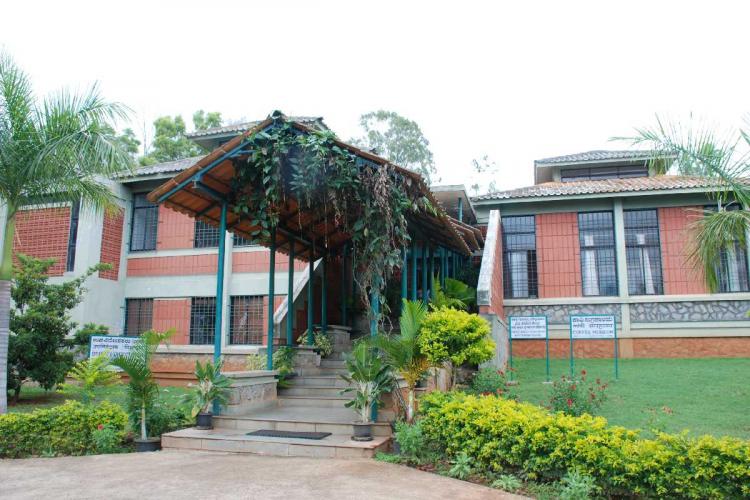
After exploring and experiencing nature’s benevolence and pastoral charm in the Western Ghats, I began my coffee museum trail. From Chikkamagaluru, which houses India’s earliest coffee plantations, to Kodagu, a place whose culture is intertwined with coffee, and finally to the heart of Bengaluru city, I visited coffee museums and explored the history behind the refreshing cup of coffee.
Coffee Yatra Museum
With a profusion of coffee curing works, Chikkamagaluru, which is undoubtedly the heart of Karnataka’s coffee country, now also houses the Coffee Yatra Museum, an initiative of the Coffee Board of India. At Coffee Yatra Museum, I saw a thematic display of coffee history, providing an insight into Indian coffee and the painstaking procedures that go into its making. A multimedia presentation charted the coffee bean’s journey from the plant to the cup, explaining processes like picking, drying, and grinding. Also on display were coffee-curing apparatus.
As I entered the building, I was bowled over by the huge posters that adorned the museum walls, showcasing interesting information about the coffees of India. Moving on, I saw the Coffee Map of India that highlighted both the traditional and the non-traditional coffee-growing regions of India. From the map, I learned about the various coffee beans grown in different areas. Next, came the Coffee Evaluation Centre where a staff member explained the processing of coffee beans. After that, I moved to a separate section where the final product is tasted before it is ready to go into the market.
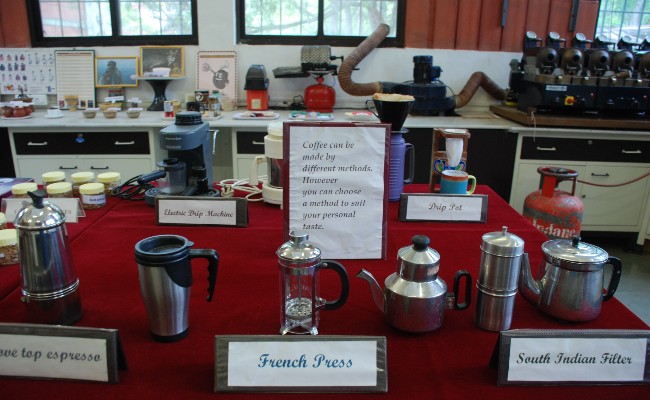
At the museum, I also learnt about the cultural practices, age-old traditions, and several other aspects of coffee. A coffee movie was played along with a coffee song, which spoke about the cultivation of coffee in the language of the farmers. I also visited the museum’s Laboratory to know about the grinding process and the equipment used to process coffee.
Sidapur Coffee and Culture Museum
From Chikkamagaluru, we proceeded to Sidapur Coffee and Culture Museum at Evolve Back in Chikkana Halli Estate, Kodagu. The museum has different sections that talk of the story of the founding Ramapuram family, the history of coffee in Kodagu, how coffee is cultivated globally, and the art of brewing the perfect cup of coffee. It also featured the culture of Kodagu and its close association with coffee cultivation. It recreated a space that evoked the rustic feel of a coffee plantation, with materials used in the past and the present, reminiscent of eras gone by and ways of life that have been replaced with the onset of modernity.
Housed in what was originally the old smokehouse (the result of an experiment with growing rubber on the Chikkana Halli Estate), the museum has a high thatched roof with red oxide flooring, typically found in old plantation homes. Jute, coir, burlap, wood, and old metal were the other key players in the mix of materials.
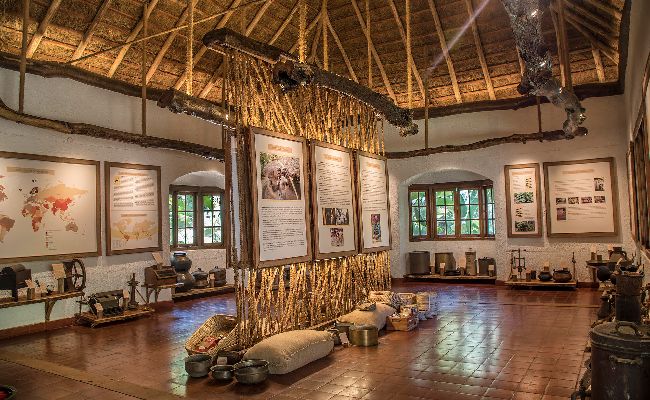
Large, dented copper and brass vessels of unique shapes and sizes lined the walls, each whispering their unique stories. “A few of the objects are from the Ramapuram family collection, such as an old hand-operated coffee roaster and typewriter that were in use on the Chikkana Halli Estate. The coffee grinder in the museum has had quite a journey. It belonged to a Kodava gentleman who ran a coffee house in Lahore before Partition, after which it was transported to Bengaluru and housed in Chinny’s Café on Brigade Road for many years,” said Jos Ramapuram, executive director, Marketing, Evolve Back.
The unbelievably large tree stump that formed the base of the centre table in the coffee brewing area,was from the Chikkana Halli Estate. At the Coffee Museum I experienced the thrill of making my own brew right from pulping, grading, roasting, and grinding. Visitors get to stroll around the museum and get a taste of life in the days of old in Kodagu, to the accompaniment of the invigorating aroma of coffee in the air. Equally interesting was Coffeeology, a daily live session on the art and science of gourmet coffee, where visitors can observe and experience the making of an assortment of coffee preparations from around the world.
Blossom to Brew
From Evolve Back, we hopped to Tamara Kodagu where I embarked on the signature guided walk. With the Blossom to Brew experience, I learnt how a bean undergoes various processes to reach the coffee mug. The session ended at The Verandah, a 155-year-old heritage structure in Kabbinakad estate, which originally housed plantation workers. Currently, it has been restored into a rustic coffee lounge and has a gift shop stocked with natural products from the estate and library. There I learnt all about the process of grading, roasting, and blending. I ended the session relishing a hot cup of coffee at the lounge.
Coffee Lab
I culminated my coffee-museum-hopping trail with a visit to the Coffee Lab in Sadashivanagar, in the heart of Bengaluru. As I sauntered into Coffee Lab, I could sense the aroma of coffee assailing the air. Every nook and corner of the lab was adorned with mugs, coasters, antique jugs, filters, and other coffee paraphernalia collected from all over the world by Sunalini Menon. Known as Asia’s first woman of coffee, Sunali set up Coffee Lab in Bengaluru in 1997 for evaluating the technical nuances of Indian coffee.
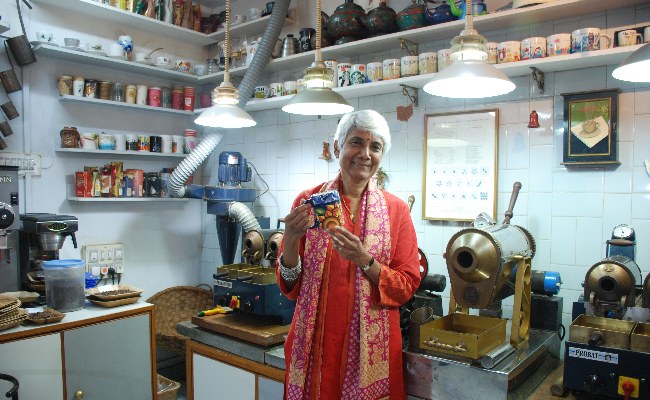
The Coffee Lab bore the semblance of a mini museum with its walls lined with a variety of packaged coffee and curios from around the world – exquisite grinders, scented candles, filters, mugs, and a whole shelf of old-fashioned tumblers – a stark contrast to the regular sparkling white laboratories filled with shiny apparatus used for coffee accreditation and testing.
It also housed memorabilia including tribal products from coffee growing areas, areca nut pickers, traditional milk measurement units, and coffee pots. Each piece of equipment threw light on the culture of the country it came from. For instance, Italian pots have ornate carvings; the ones in Iran are known for their silver and filigree; Pakistan has a recurring crescent moon pattern: while Egypt designs sported Cleopatra. The star attraction of Coffee Lab was the painting of Mona Lisa done in coffee powder. After a journey of fascinating discoveries, I returned satiated.
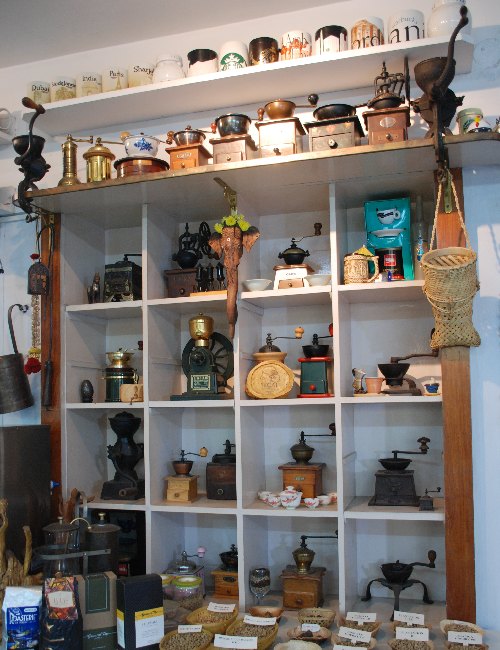
All pics by Susheela Nair.
Susheela Nair is an independent food, travel and lifestyle writer and photographer contributing articles, content and images to several national publications besides organising seminars and photo exhibitions. Her writings span a wide spectrum which also includes travel portals and guide books, brochures and coffee table books.
source: http://www.thenewsminute.com / The News Minute / Home> Features> Food / by Susheela Nair / edited by Maria Teresa Raju / June 26th, 2023

